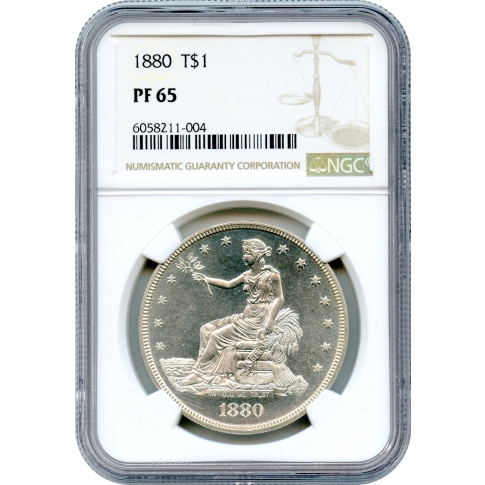Why did the United States make the Trade silver dollar at the same time the u.s. was issuing the Seated Liberty silver dollar, and then the Morgan silver dollar?
The United States minted various silver dollars over time for several reasons, reflecting economic, legislative, and historical contexts:
1. Trade Dollar (1873-1885)
Purpose: The Trade Dollar was specifically designed to compete with other large silver coins in international trade, particularly in Asia where silver was the preferred medium of exchange. The U.S. wanted to facilitate trade with China and other East Asian countries, where the Spanish and Mexican silver dollars were widely used. -
Legislation: The Coinage Act of 1873 authorized the minting of the Trade Dollar. This act was part of a broader move towards the gold standard in the U.S., but silver was still crucial for international commerce. -
Design: The Trade Dollar was slightly heavier than the standard silver dollar to ensure it would be accepted in Asian markets over other silver coins.
2. Seated Liberty Dollar (1840-1873)
Historical Context: Before the Trade Dollar, the Seated Liberty design was used for silver dollars. This coin was part of a broader redesign of U.S. coinage by Mint Director Robert M. Patterson and Chief Engraver Christian Gobrecht. -
Reason for Continuation: Even after the introduction of the Trade Dollar, the Seated Liberty Dollar continued to be minted because it was the standard domestic silver dollar. The Trade Dollar was more for international use, while the Seated Liberty was for domestic circulation.
3. Morgan Silver Dollar (1878-1904, 1921)
Legislation: The Bland-Allison Act of 1878 mandated the U.S. Treasury to purchase and coin silver into dollars. This was a response to the economic depression of the 1870s and pressure from silver mining interests, as well as those who favored bimetallism over the gold standard.
Transition: The Morgan Dollar replaced the Seated Liberty Dollar for domestic circulation. The Trade Dollar was demonetized in 1876 due to its failure to maintain its value against other silver coins and because of domestic political pressures, including concerns over its legal tender status.
Reasons for Overlap and Transition
Economic Needs: Each coin type addressed different economic needs at different times. The Trade Dollar was for international trade, the Seated Liberty for domestic use, and the Morgan Dollar was a response to domestic economic policies and silver interests.
Legislative Changes: Changes in legislation like the Coinage Act of 1873 and the Bland-Allison Act influenced which coins were minted and when.
Market Demand and Policy Shifts: The U.S. was navigating its monetary policy, dealing with the shift from bimetallism to the gold standard, and responding to global trade dynamics. The silver content in coins was also a significant factor in their minting, reflecting the government's stance on silver versus gold.
Political Pressure: The push from silver mining states and those advocating for silver as currency played a significant role in the minting of silver dollars, especially the Morgan Dollar.
In summary, the coexistence and transition between these silver dollars were driven by a mix of international trade needs, domestic economic policies, legislative decisions, and political pressures concerning the role of silver in the U.S. economy.




